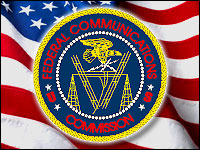
The FCC plans to open up a new batch of wireless spectrum to bring faster and more reliable access to public WiFi hotspots, its chairman announced Wednesday during a talk at the 2013 CES, although it will have to overcome some obstacles.
The commission seeks to free up 195 Mhz of spectrum in the 5 GHz band, the largest block of unlicensed spectrum to be made free for WiFi expansion since 2003, FCC Chairman Julius Genachowski revealed.
The move is designed to decrease network congestion in highly trafficked areas such as airports, convention centers and major conferences. In addition to being faster and higher capacity, the FCC said it would especially lead to improved HD video capabilities.
Cooperation Required
The 5 GHz band is currently being used for both federal and non-federal purposes, and Genachowski acknowledged the process of freeing the bandwidth will require inter-agency efforts. Still, he stressed that the FCC will move quickly in collaboration with federal agencies to go forward with the arrangement.
Alleviating network congestion and allowing the use of unlicensed spectrum is part of a larger federal technology initiative ordered by President Obama to free 500 MHz of spectrum by 2020. Last September, the FCC announced an incentive auction process that allows broadcast TV stations to sell extra spectrum to wireless providers. The auctions are expected to start next year.
Given that national WiFi expansion is a presidential priority, the FCC is likely going to do all it can to free up the spectrum, said Rob Enderle, principal analyst at the Enderle Group. The one agency that might be able to put a wrench in the FCC’s plan, however, would be the Department of Defense.
If the spectrum were being used in a manner critical to national security, a deal that includes swapping out technology and bandwidth might be difficult to broker, especially with budget cuts looming over the DoD. Other than that, though, the FCC and other government agencies are relatively united in the common goal of expanding WiFi access, he said.
“It’s very possible that some of that spectrum is currently used by DoD technology, but that would probably be the only hang-up,” Enderle told the E-Commerce Times. “Other than that, the FCC is going to do what it can to get this through. It has enough control over locking up spectrum that it can tell the other agencies or consumers they have to bend a little to get this through.”
The FCC did not respond to our request for further details.
The Right Spectrum in the Right Places
In addition to showing a commitment to freeing up bandwidth, the FCC’s statement indicates the commission is putting an increased emphasis on more efficient spectrum allocation, said Harold Feld, senior vice president at Public Knowledge.
“Having more of these bands that are separate from each other allows you more freedom and better setup if you’re at a convention center, for instance,” Feld told the E-Commerce Times. “You can dedicate the 5 GHz band to the WiFi for the convention floor, while different bands are being used for services like internal security and credit care readers and other needs for a wireless network.”
That commitment to efficiency can lead to a better understanding of the country’s bandwidth resources and help alleviate some of the spectrum crunch, Feld pointed out.
“There’s a potential with a move like this to not just look at bands generically, but to differentiate the circumstances where these bands should be put to use as they become available,” he noted. “That can make it become a much more efficient system overall, when we can match the traffic and need with the right spectrum.”
Only More to Come
While the FCC may take a while to get the ball rolling on some of its initiatives, this is one area the FCC will aggressively pursue, said Enderle.
“This is one of the easiest ways to increase Internet access, so I think their priority is real,” he said. “The FCC isn’t known for speed, but this should be one of their fastest efforts to date.”
That refreshed commitment from the FCC is coming as the commission is developing a better understanding of the pressing need for wireless services in an enterprise and consumer landscape increasingly filled with smartphones, tablets and a reliance on the cloud, Feld noted. This isn’t the first and won’t be the last effort by the FCC to work to increase overall WiFi access, he said.
“The FCC in the last year or two have passed the incentive auction legislation and have defended some plans that made it clear they are much more focused on the WiFi side of the equation,” Feld said. “They are understanding that having WiFi is a necessary part of the overall wireless ecosystem and they’re really starting to look at how to inject more usable spectrum into that equation.”





















































Social Media
See all Social Media